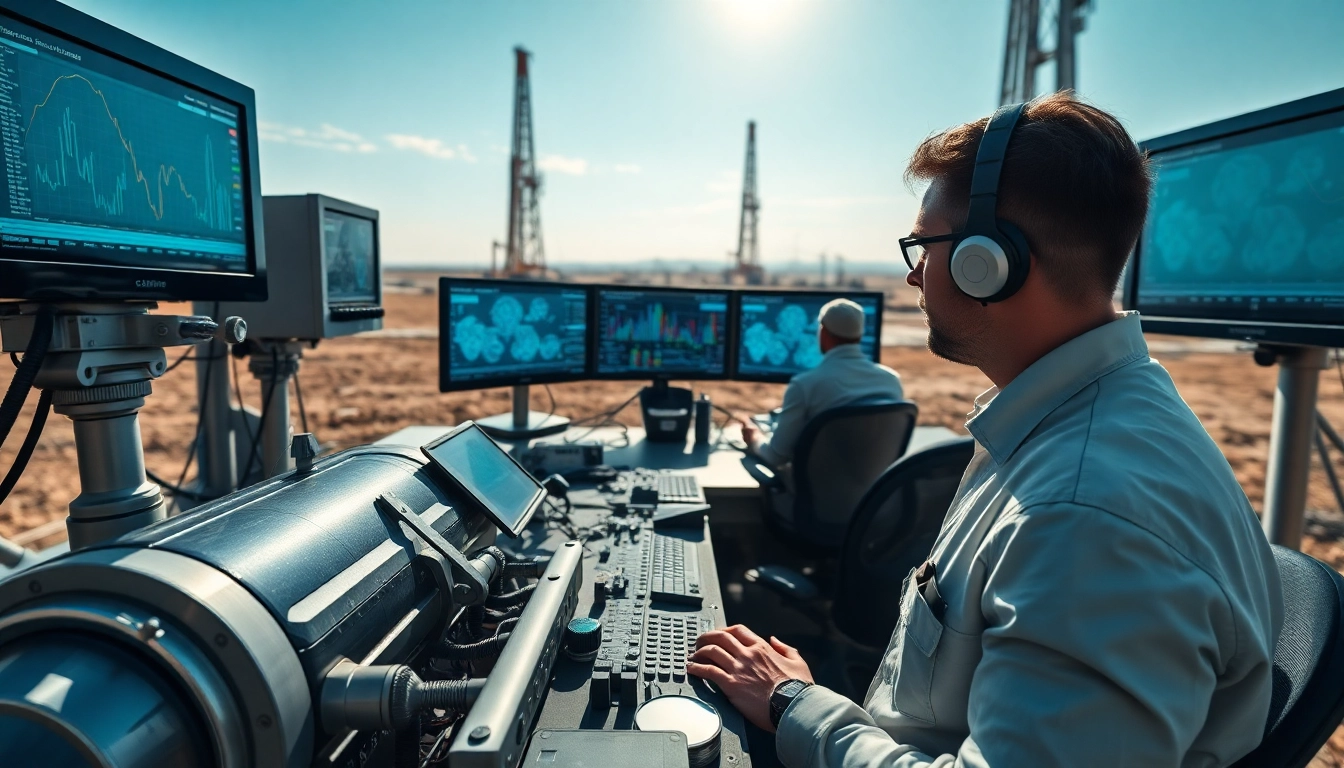Enhancing Drilling Accuracy with www.geosteeringvision.com Solutions
Understanding Geosteering Techniques
The Fundamentals of Geosteering
Geosteering is an innovative technology employed primarily in the field of oil and gas drilling. It involves the precise navigation of the drilling process to optimize wellbore placement in relation to geological formations. Essentially, geosteering allows operators to drill a wellbore in real-time within the most productive zones of the reservoir. This process is facilitated by integrating geological data with accurate drilling parameters, providing engineers with vital insights that can significantly influence the outcome of drilling operations.
Real-Time Data Utilization
The essence of successful geosteering lies in the utilization of real-time data. By employing advanced data acquisition technologies and analytical software, operators can continuously monitor the geological conditions surrounding the drill. Various data types, including resistivity and density logs, are captured as drilling progresses. This information can be analyzed on-site to adjust the drilling angle and trajectory dynamically. As a result, the wellbore can be kept within the desired geological strata, improving the chances of accessing those hydrocarbon reservoirs.
Importance of Geological Insights
A profound understanding of geology is fundamental to effective geosteering. Geological insights not only dictate where to drill but also inform when to make critical adjustments during the drilling process. The integration of geological knowledge helps the drilling team predict the behaviors of the formation, which is crucial for risk mitigation and maximizing yields. Using geological models, operators can plan trajectories that optimize production while minimizing operational risks.
Benefits of Using www.geosteeringvision.com
Improved Drilling Efficiency
One of the most significant advantages of utilizing geosteering techniques is the enhancement of drilling efficiency. By continuously adjusting based on real-time data, the drilling team can maintain the wellbore within optimal zones. This leads to a reduction in the time spent drilling non-productive sections, thereby lowering operational costs and increasing the overall rate of return on investment (ROI) for drilling projects.
Cost-Effective Operations
Geosteering not only improves drilling outcomes but also supports more cost-effective operations. Minimized drilling times and targeted well placements can greatly reduce costs associated with drilling equipment and labor. Furthermore, the reduction in non-productive time directly correlates with an increase in profitability. Companies leveraging technologies from www.geosteeringvision.com can achieve more efficient operational plans that optimize spending and resource allocation.
Enhanced Well Placement Strategies
Effective geosteering provides the means to develop enhanced well placement strategies. By utilizing advanced modeling techniques and conducting analyses based on real-time data, operators can strategically select ideal drilling paths that align with the geology of the target area. This proactive approach can lead to improved recovery rates and better reservoir management over the lifespan of the well.
Key Technologies in Geosteering
Advanced Software Solutions
Essential to the success of geosteering are various advanced software solutions that analyze data from the drilling process. These programs offer integration of geological models with real-time data and can simulate outcomes based on different drilling strategies. Powerful algorithms can process vast datasets, providing insights and forecasts that guide drillers in making informed decisions. Such software is a cornerstone of modern geosteering practices.
Integration with Drilling Equipment
The integration of robust software with modern drilling equipment has revolutionized geosteering. High-precision drilling tools equipped with sensor technology allow real-time data collection and monitoring of drilling parameters. This synergy between software and hardware facilitates seamless communication, enabling operators to make corrective adjustments promptly, ensuring that the drilling stays on course and targets the most productive areas of the reservoir.
Real-Time Monitoring Technologies
Real-time monitoring technologies play a pivotal role in successful geosteering. These technologies encompass data acquisition systems that capture various measurements, such as pressure, temperature, and formation characteristics during drilling. Coupled with robust data analysis algorithms, these systems provide valuable insights into the conditions surrounding the drill bit, allowing for precise adjustments to drilling activities on-the-fly. Enhanced monitoring capabilities not only increase drilling accuracy but also significantly enhance safety protocols by identifying potential hazards early in the process.
Challenges and Best Practices
Common Challenges in Geosteering
While geosteering offers numerous benefits, it also presents unique challenges. One major challenge is the reliability of real-time data. Inaccurate or incomplete data can lead to misguided decisions, resulting in drilling inefficiencies or even failures. Additionally, geological formations can change unpredictably, requiring a flexible approach to drilling strategies. Operators must also contend with potential delays caused by equipment malfunctions or technological failures, which can impede the drilling process.
Implementing Best Practices
To maximize the effectiveness of geosteering, it is essential to implement best practices. This includes maintaining a strong collaboration between geoscientists and drilling engineers to ensure that geological insights are effectively integrated into the drilling process. Additionally, investing in high-quality training for personnel involved in geosteering operations ensures optimal use of technology and methodologies. Regular calibration of drilling equipment also helps maintain data accuracy and reliability.
Measuring Performance and Accuracy
Measuring the performance and accuracy of geosteering operations is crucial for continual improvement. Key performance indicators (KPIs) should be established to evaluate drilling efficiency, including metrics such as rate of penetration (ROP), time to reach target depth, and overall drilling costs. By analyzing these metrics, companies can assess the effectiveness of their geosteering practices and make data-driven adjustments to their strategies. Conducting post-drilling evaluations also offers valuable lessons that can enhance future projects and refine methodologies.
Case Studies and Success Stories
Successful Drilling Operations
Numerous successful drilling operations serve as testaments to the efficacy of geosteering techniques. In one notable instance, a drilling team utilized geosteering methods to successfully navigate a challenging geological formation characterized by variable soil types and steep angles. By leveraging real-time data and utilizing advanced software tools, the team was able to continuously adjust their drilling trajectory, resulting in the successful extraction of hydrocarbons from the targeted reservoir while minimizing drilling times and costs.
Innovative Applications of Geosteering
Innovative applications of geosteering are continually evolving as technology advances. For example, some operators have begun to implement machine learning algorithms to enhance predictive modeling of geological formations, allowing for more accurate drilling plans. These innovations represent the cutting edge of geosteering technology, demonstrating how the integration of data science can further optimize drilling operations and improve overall resource recovery rates.
Lessons Learned from Projects
Experiences from previous geosteering projects have yielded insightful lessons that can guide future efforts. A common theme in successful projects is the recognition of the importance of adaptability; the drilling teams that fared best were those that were agile in the face of unexpected geological changes. Moreover, fostering a culture of open communication and collaboration among team members emerged as another critical factor for successful implementation. By sharing insights and remaining responsive to real-time data, teams can significantly increase their chances of successful drilling outcomes.














Post Comment